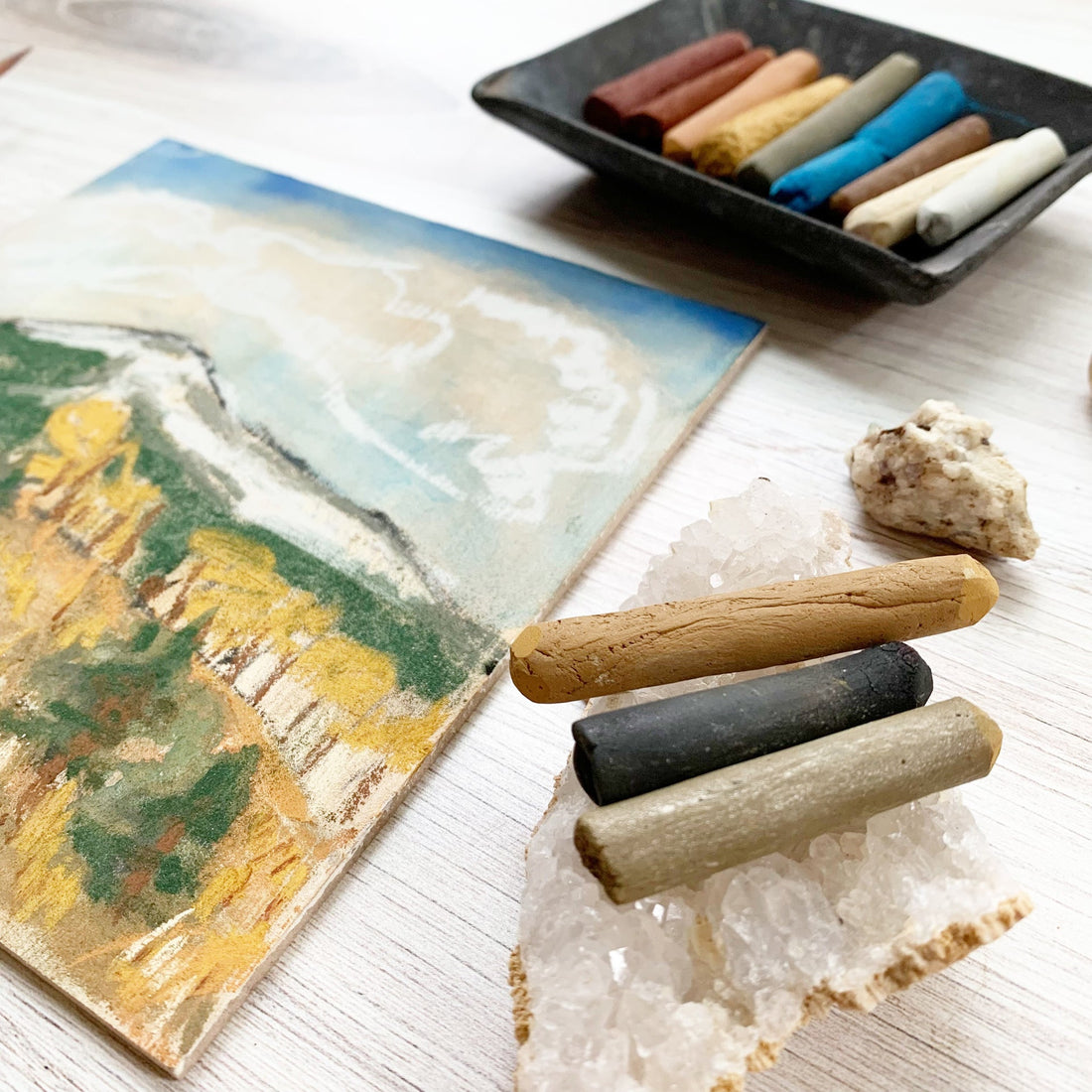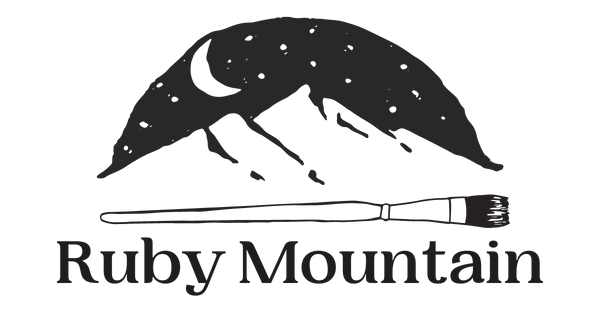
Creating an Earth-Friendly Studio for Earth Week
Share

Art supplies have come a long way in recent times, allowing artists to swap out toxic materials and supplies in favor of non-toxic options that are just as good, if not better!
A few little changes can make your studio healthier for you and the planet, especially if your studio is in your home. Even more so if you work around children or pets.
🌱choose to purchase only non-toxic supplies
In my own work, I avoid using paints that have lead, cadmium, cobalt and other toxic substances. There are plenty of non-toxic alternatives are just as good, so I stick to those.
Watercolor paint is one of the purest materials, consisting of pigment and a plant and honey based binder. Traditional acrylic paint has a plastic-based binder. There are plant-based alternatives that are become more popular, and I like using the plant-based acrylic in place of traditional matte medium in collages. If you are an oil painter, there are now less toxic alternatives available including water-mixable oils and less toxic solvents like spike lavender instead of turpentine or mineral spirits. I work in my home around children and pets, so I choose non-toxic supplies that offer easy clean up.
🌱use up what you have before buying more
Did you know paper can actually go bad? The sizing in watercolor paper, which is what makes the paint sit on top of the paper, rather than soak into it right away, can dissipate after a while. It is hard to estimate how long that is, as it depends on a lot of factors including if the sizing is internal or external, when the paper was manufactured, the climate and how it is stored. To keep your paper fresh longer, store it in the plastic it comes in (if possible), and use it as you buy it. Try not to hoard it for long.
🌱swap out paper towels for rags you can wash and reuse
This simple swap is so worth it! I keep a little trash can just for rags in my studio (years ago my daughter labeled it Rainbow Rags) and when that's full I wash them in my washing machine. It ensures I always have clean rags and I never feel wasteful using as many as I want because I can just throw them in the bin to be washed and refused.
🌱eliminate plastics as much as possible and reuse what you can
When I used to teach art I reused SO MUCH: cardboard, yogurt containers, magazines, boxes, etc etc. In my studio now I always keep an eye out for materials to be reused. Large boxes and cardboard sheets are saved to make pastels or as painting surfaces. Shipping materials like ribbon or wrappings from orders are saved to be reused in other orders. Nice glass jars from the kitchen get reused as water jars, mixing jars storage, and more when painting. Vintage tins and other items are repurposed as travel paint palettes, sketchbook covers, and art kits. Bits of paper and packaging are reused in collages and mixed media pieces.
Let me know what other things you do in your own studio to make it more earth-friendly and eliminate toxins?
